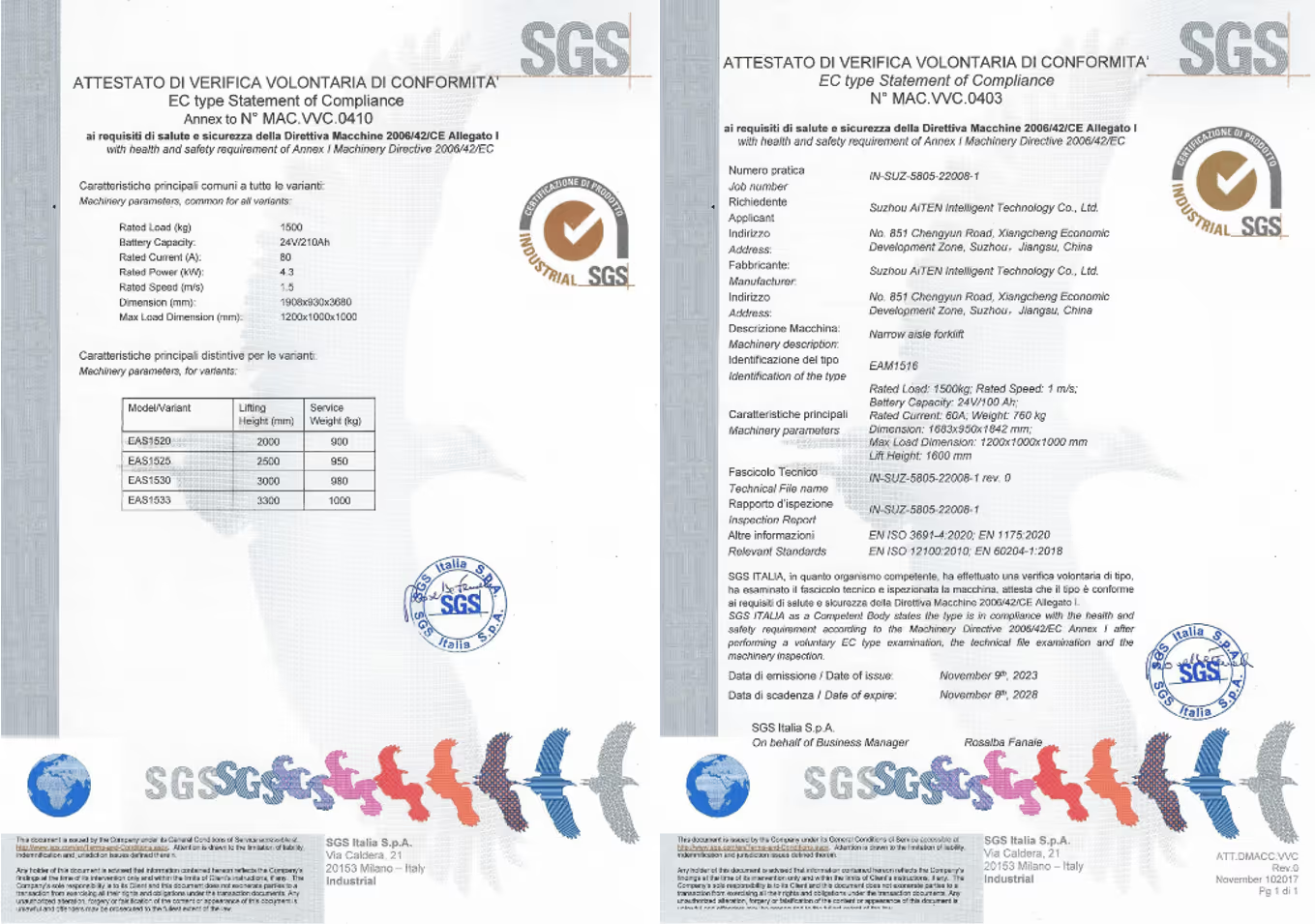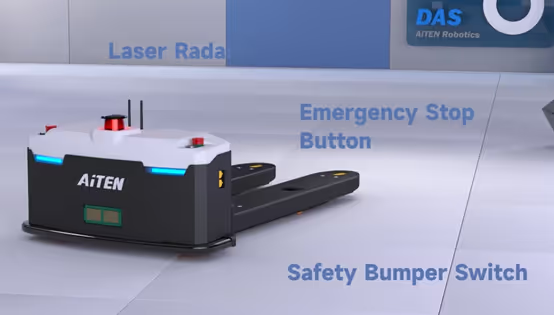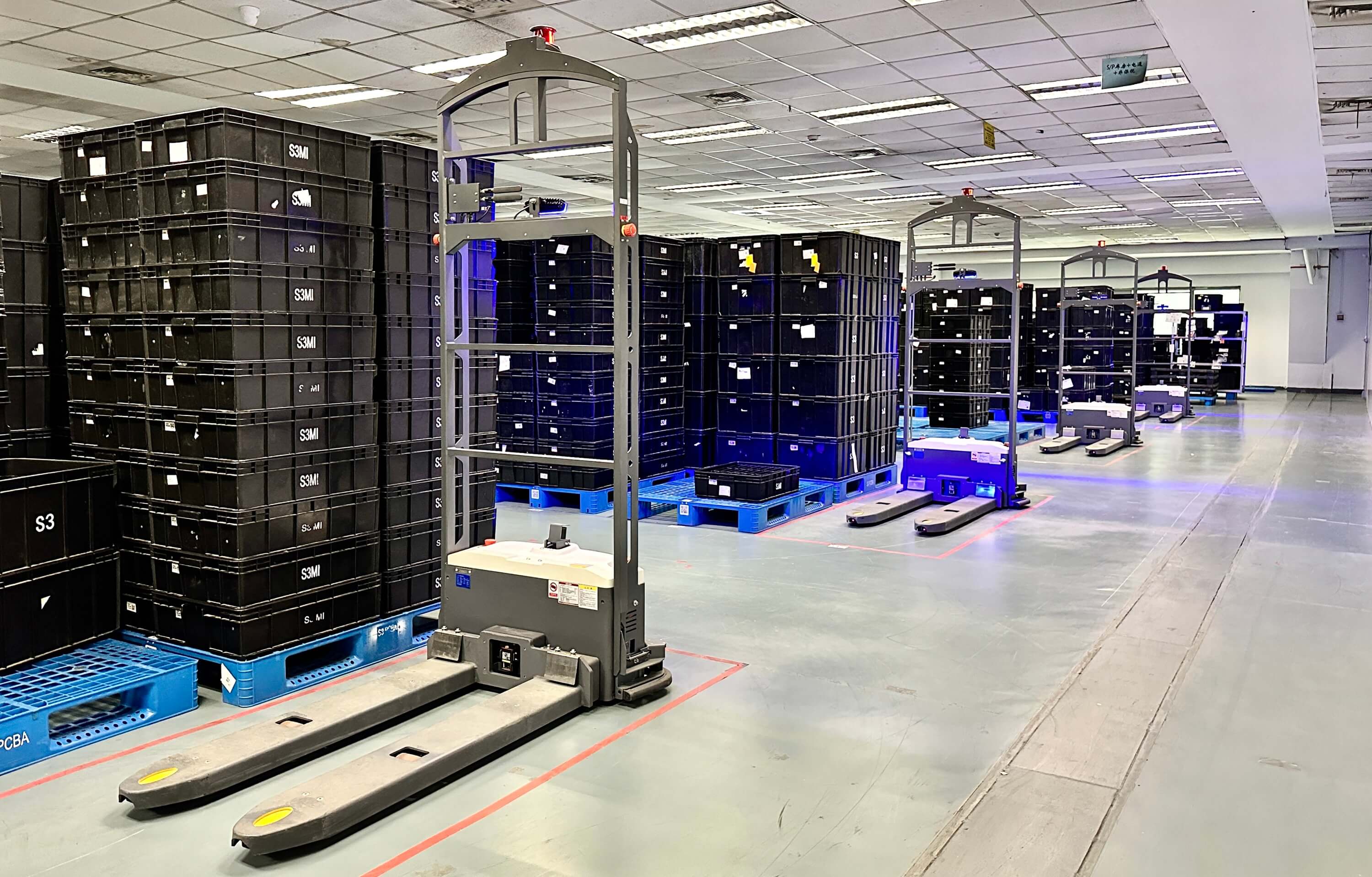Carretillas elevadoras sin conductor y normas de seguridad en entornos industriales
.jpg)
En los entornos industriales, donde son habituales las cargas pesadas y la interacción hombre-máquina, las carretillas elevadoras sin conductor deben cumplir estrictas normas de seguridad para evitar accidentes. Comprender estas normativas y cómo se integran con los sistemas automatizados es fundamental para realizar operaciones seguras y conformes a la normativa.
Normas mundiales de seguridad: Un marco para el cumplimiento
Las carretillas elevadoras sin conductor se rigen por normas internacionales y regionales diseñadas para mitigar los riesgos:
- ISO 3691-4: Esta norma, referencia mundial para las carretillas industriales, especifica los requisitos de seguridad de las carretillas sin conductor, incluidas las funciones de parada de emergencia, detección de obstáculos y fiabilidad del sistema. Exige que los sistemas automatizados sean "a prueba de fallos", es decir, que se desconecten fácilmente si un componente funciona mal.
- ANSI/ITSDF B56.5: Directrices para el funcionamiento seguro de carretillas elevadoras sin conductor, incluido el uso de escáneres láser o cámaras 3D para la detección de obstáculos.
- Marcado CE (UE): Garantiza el cumplimiento de las directivas sobre maquinaria, haciendo hincapié en la evaluación de riesgos para entornos dinámicos como almacenes de gran actividad, en los que las carretillas elevadoras interactúan con peatones y equipos manuales. Para cumplir los requisitos normativos del mercado europeo, AiTEN se ha sometido a estrictas auditorías y ha obtenido el certificado CE de la UE para los productos AGV, incluidos los MP10, AM1516, AE15, AS15 y otros productos.

Principales características de seguridad de las carretillas elevadoras sin conductor
Para cumplir estas normas, las carretillas elevadoras modernas sin conductor integran tecnologías de seguridad por capas:
- Detección de obstáculos en tiempo real: Equipados con radar láser y sensores, detectan obstáculos en tiempo real, reduciendo los accidentes hasta en un 90%.

- Mando manual: Los botones de parada de emergencia y las capacidades de control remoto permiten a los operadores humanos tomar el control al instante.
Mejores prácticas de aplicación de la seguridad
Más allá de las características del equipo, el despliegue seguro requiere:
- Evaluación de riesgos específica del lugar: Trace un mapa de las zonas de tráfico intenso y los puntos ciegos para ajustar la sensibilidad de los sensores (por ejemplo, reduciendo la velocidad cerca de los muelles de carga).
- Formación del personal: Enseñar a los trabajadores a reconocer las señales de las carretillas elevadoras (por ejemplo, luces intermitentes de aproximación) y a evitar movimientos bruscos en las zonas automatizadas.
- Auditorías periódicas: Pruebe mensualmente las paradas de emergencia y valide anualmente el cumplimiento de las normas ISO/ANSI, actualizando el software a medida que surjan nuevos riesgos.
Conclusión
El cumplimiento de las normas de seguridad no es sólo reglamentario, sino que aumenta la eficiencia operativa. Las carretillas sin conductor que cumplen la normativa reducen el tiempo de inactividad por accidente y los costes de los seguros, al tiempo que generan confianza entre trabajadores y clientes.
Para las empresas que adopten carretillas elevadoras sin conductor, dar prioridad a las normas garantiza que la automatización mejore, en lugar de comprometer, la seguridad en el lugar de trabajo.
Como empresa especializada en soluciones logísticas inteligentes, AiTEN Robotics se ha centrado sistemáticamente en el escenario de la "fábrica inteligente", integrando profundamente la innovación tecnológica con las necesidades de la industria. Ha prestado servicios integrales a más de 200 clientes fabricantes de todo el mundo: Aprovechando una gama completa de carteras de productos de robots de manipulación de materiales para cubrir diversos escenarios de manipulación de materiales, hemos desarrollado un sistema de programación inteligente de nivel industrial para permitir una colaboración eficiente entre múltiples dispositivos. A través de un sistema integral de servicios de ciclo de vida que abarca desde la planificación preventa, la implantación y la implementación hasta la optimización de las operaciones, capacitamos a las empresas para lograr la transformación inteligente de la logística, impulsando continuamente la actualización digital y el desarrollo de alta calidad de la industria manufacturera.
Póngase en contacto con nosotros para explorar una fábrica automatizada con plenos valores de seguridad.









_%E7%94%BB%E6%9D%BF%201.avif)

